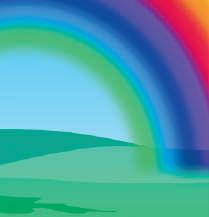
7 minute read
CLIL PAGES
Bar Graphs
A. Look at the picture of class 5C below. How many students have got dark/fair/red hair? Count and write the results in the table.


HAIR COLOUR Dark Fair Red NUMBER OF STUDENTS
B. Look at the bar graph about hair colour in class 5C below. Answer the questions 1-3. Choose a or b.
8 70 6 5 4 3 2 1 0 Hair colour graph: Class 5C
Dark Fair Red 1. What do the numbers in blue in the bar graph show? a. number b. number of different of students hair colours 2. How many students are there in the class? a. seven b. fourteen 3. Which hair colour have most students got? a. dark b. red
C. Look at the table below. It shows information about the students’ eye colour in class 5C. Answer the questions 1-4 and make a bar graph with the information.

EYE COLOUR
NUMBER OF STUDENTS Brown 8 Blue 3 Grey 2 Green 1 1. What information does the table give us? 2. How many students have got grey eyes? 3. How many bars will the bar graph have? 4. What information do you need to complete the gaps 1-5? Complete the gaps. Then draw the bars.
09 8
70 6 5 4 3 2 1 1 Project
Complete a questionnaire! Complete a questionnaire on eye colour in your class. Follow the three stages in the TIP below. EYE COLOUR Brown Blue Grey Green NUMBER OF STUDENTS
Stage 1: Collect the data. Stage 2: Organise the data. Stage 3: Use the data to create a bar graph.




CLIL / Science / Science Magnets
A. Work in groups of 4-5. Empty out your school bags and pockets and use the magnet to find out what items stick to it. B. Why do only some of the items stick to the magnet? Listen, read and find out. C. Look at the diagrams below and draw arrows to show what the magnets do. 1. 2.
You will need: a magnet
There are two answers: they stick to each other or they push away from each other.
This is because magnets have two different parts. They’ve got a magnetic north pole and a magnetic south pole. Two magnets with the same pole – two south poles or two north poles – push away from each other. They do not stick to each other. N Two magnets with different poles – one north and one south – stick to each other.
S N
S N N S
S
Lots of things around us are magnetic. Put a magnet near them and they move towards it. Many metals are magnetic, but not all of them are. move towards it. Many metals are magnetic, but not all of them are.
Did you know the Earth is a big magnet?
N
S
N S N S
N S S N Project
Do an experiment! Look at the items below. Which ones do you think are magnetic? Tick () the correct circle in the table below. Then, at home, use a magnet to check your answers.
MAGNETIC
NONMAGNETIC











Rainbows





A. Look up the highlighted words in the text in a dictionary.
B. What do you know about rainbows? Why do rainbows appear after it rains? Listen, read and check your answers. We can sometimes see rainbows when sunlight and raindrops come together. Sunlight is white light and actually has different colours in it. We don’t usually see them because when a beam of sunlight comes down to earth, the light is white. When there are raindrops in the air and the beam of sunlight hits them at a specific angle, the raindrops separate the white light into different colours. That is why we see a rainbow. We can see seven colours in a rainbow in this order: red, orange, yellow, green, blue, indigo and violet.
C. Find the mistakes in the rainbow below.
Project








Do an experiment! Do an experiment!You will need:
Make a rainbow!
a sprayer sunlight a plant
1. Fill the sprayer with water. 2. Go outside on a sunny day. 3. Stand with your back to the sun.
Have something dark (e.g. a large plant) in front of you. 4. Spray water in the air.


CLIL / Science Plant life



A. Which of the following do you think plants need to grow? Tick () the correct words. Then listen, read the text and check your answers.
water clouds insects air light rocks
seed

What do plants need to grow?
Plants, like all living things, need water and food to live. Their roots take water from the soil, but the amazing thing about plants is that they can make their own food. They do this using light from the sun, which they collect through their leaves. Plant seeds start growing underground, away from the sun. They don’t need light, because they don’t have leaves and so they can’t make food from sunlight yet. They need water and air, which they find in the soil. Without air, most plants cannot grow. That’s why only a few special plants can grow underwater. Plants need light when they get bigger though, and this is why we keep them outside or near a window.
B. Look at the science experiments below. In each one, some beans are growing in a different environment. Can you guess how they will grow? Match the experiments to the results below.
Experiment 1 Experiment 2 Experiment 3 Experiment 4
Result A Result B Result C
water light air water light air
water water light light air air Result D
C. Discuss the following. • Do you like growing plants? • Why / Why not?
Project Grow a bean plant! Put some water on a paper towel and put it in a dish. You will need: Then put the beans on the paper towel. Make sure you keep the paper towel wet. When your beans start to grow, put them in pots of soil. Grow them in your classroom!

Make sure the beans are raw - this means you can’t use cooked beans or beans from a can!










